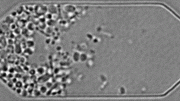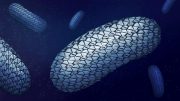
Researchers identified a range of potential antivirals that could be developed into new treatments for COVID-19.
Researchers at the Francis Crick Institute and University of Dundee have screened thousands of drug and chemical molecules and identified a range of potential antivirals that could be developed into new treatments for COVID-19 or in preparation for future coronavirus outbreaks.
While COVID-19 vaccines are being rolled out, there are still few drug options that can be used to treat patients with the virus, to reduce symptoms and speed up recovery time. These treatments are especially important for groups where the vaccines are less effective, such as some patients with blood cancers.
In a series of seven papers, published today (July 2, 2021) in the Biochemical Journal, the scientists identified 15 molecules which inhibit the growth of SARS-CoV-2 by blocking different enzymes involved in its replication.
The researchers developed and ran tests for around 5,000 molecules provided by the Crick’s High Throughput Screening team to see if any of these effectively blocked the functioning of any of seven SARS-CoV-2 enzymes. The tests were based on fluorescent changes with a special imaging tool detecting if enzymes had been affected.
They then validated and tested the potential inhibitors against SARS-CoV-2 in the lab, to determine if they effectively slowed viral growth. The team found at least one inhibitor for all seven enzymes.
Three of the molecules identified are existing drugs, used to treat other diseases. Lomeguatrib is used in melanoma and has few side-effects, suramin is a treatment for African sleeping sickness and river blindness and trifluperidol is used in cases of mania and schizophrenia. As there is existing safety data on these drugs, it may be possible to more quickly develop these into SARS-CoV-2 antivirals.
John Diffley, lead author of the papers and associate research director and head of the Chromosome Replication Laboratory at the Crick, said: “We’ve developed a chemical toolbox of information about potential new COVID-19 drugs. We hope this attracts attention from scientists with the drug development and clinical expertise needed to test these further, and ultimately see if any could become safe and effective treatments for COVID-19 patients.”
The 15 molecules were also tested in combination with remdesivir, an antiviral being used to treat patients with COVID-19. Four of these, all which target the SARS-CoV-2 enzyme Nsp14 mRNA Cap methyltransferase, were found to improve the effectiveness of this antiviral in lab tests.
The scientists now plan to run tests to see if any pairing of the 15 molecules they identified decreases the virus’ growth more than if they are used alone. Targeting enzymes involved in virus replication could also help prepare for future viral pandemics.
“Proteins on the outside of viruses evolve rapidly but within different classes of viruses are well conserved proteins that change very little with time,” adds John.
“If we can develop drugs that inhibit these proteins, in the situation of a future pandemic, they could provide a valuable first line of defense, before vaccines become available.”
References:
“Identification of SARS-CoV-2 Antiviral Compounds by Screening for Small Molecule Inhibitors of the nsp14 RNA Cap Methyltransferase” by Souradeep Basu, Tiffany Mak, Rachel Ulferts, Mary Wu, Tom Deegan, Ryo Fujisawa, Kang Wei Tan, Chew Theng Lim, Clovis Basier, Berta Canal, Joseph F. Curran, Lucy S. Drury, Allison W. McClure, Emma L. Roberts, Florian Weissmann, Theresa U. Zeisner, Rupert Beale, Victoria H. Cowling, Michael Howell, Karim Labib and John F.X. Diffley, 2 July 2021, Biochemical Journal.
DOI: 10.1042/BCJ20210219
“Identifying SARS-CoV-2 Antiviral Compounds by Screening for Small Molecule Inhibitors of nsp5 Main Protease” by Jennifer C. Milligan, Theresa U. Zeisner, George Papageorgiou, Dhira Joshi, Christelle Soudy, Rachel Ulferts, Mary Wu, Chew Theng Lim, Kang Wei Tan, Florian Weissmann, Berta Canal, Ryo Fujisawa, Tom Deegan, Hema Nagaraj, Ganka Bineva-Todd, Clovis Basier, Joseph F. Curran, Michael Howell, Rupert Beale, Karim Labib, Nicola O’Reilly and John F.X. Diffley, 2 July 2021, Biochemical Journal.
DOI: 10.1042/BCJ20210197
“Identifying SARS-CoV-2 Antiviral Compounds by Screening for Small Molecule Inhibitors of Nsp12/7/8 RNA-dependent RNA Polymerase” by Agustina P. Bertolin, Florian Weissmann, Jingkun Zeng, Viktor Posse, Jennifer C. Milligan, Berta Canal, Rachel Ulferts, Mary Wu, Lucy S. Drury, Michael Howell, Rupert Beale and John F.X. Diffley, 2 July 2021, Biochemical Journal.
DOI: 10.1042/BCJ20210200
“Identifying SARS-CoV-2 Antiviral Compounds by Screening for Small Molecule Inhibitors of Nsp13 Helicase” by Jingkun Zeng, Florian Weissmann, Agustina P. Bertolin, Viktor Posse, Berta Canal, Rachel Ulferts, Mary Wu, Ruth Harvey, Saira Hussain, Jennifer C. Milligan, Chloe Roustan, Annabel Borg, Laura McCoy, Lucy S. Drury, Svend Kjaer, John McCauley, Michael Howell, Rupert Beale and John F.X. Diffley, 2 July 2021, Biochemical Journal.
DOI: 10.1042/BCJ20210201
“Identifying SARS-CoV-2 Antiviral Compounds by Screening for Small Molecule Inhibitors of Nsp3 Papain-like Protease” by Chew Theng Lim, Kang Wei Tan, Mary Wu, Rachel Ulferts, Lee A. Armstrong, Eiko Ozono, Lucy S. Drury, Jennifer C. Milligan, Theresa U. Zeisner, Jingkun Zeng, Florian Weissmann, Berta Canal, Ganka Bineva-Todd, Michael Howell, Nicola O’Reilly, Rupert Beale, Yogesh Kulathu, Karim Labib and John F.X. Diffley, 2 July 2021, Biochemical Journal.
DOI: 10.1042/BCJ20210244
“Identifying SARS-CoV-2 Antiviral Compounds by Screening for Small Molecule Inhibitors of Nsp15 Endoribonuclease” by Berta Canal, Ryo Fujisawa, Allison W. McClure, Tom D. Deegan, Mary Wu, Rachel Ulferts, Florian Weissmann, Lucy S. Drury, Agustina P. Bertolin, Jingkun Zeng, Rupert Beale, Michael Howell, Karim Labib and John F.X. Diffley, 2 July 2021, Biochemical Journal.
DOI: 10.1042/BCJ20210199
“Identifying SARS-CoV-2 Antiviral Compounds by Screening for Small Molecule Inhibitors of Nsp14/nsp10 Exoribonuclease” by Berta Canal, Allison W. McClure, Joseph F. Curran, Mary Wu, Rachel Ulferts, Florian Weissmann, Jingkun Zeng, Agustina P. Bertolin, Jennifer C. Milligan, Souradeep Basu, Lucy S. Drury, Tom D. Deegan, Ryo Fujisawa, Emma L. Roberts, Clovis Basier, Karim Labib, Rupert Beale, Michael Howell and John F.X. Diffley, 2 July 2021, Biochemical Journal.
DOI: 10.1042/BCJ20210198
The Francis Crick Institute is a biomedical discovery institute dedicated to understanding the fundamental biology underlying health and disease. Its work is helping to understand why disease develops and to translate discoveries into new ways to prevent, diagnose and treat illnesses such as cancer, heart disease, stroke, infections, and neurodegenerative diseases.
An independent organization, its founding partners are the Medical Research Council (MRC), Cancer Research UK, Wellcome, UCL (University College London), Imperial College London, and King’s College London.
The Crick was formed in 2015, and in 2016 it moved into a brand new state-of-the-art building in central London which brings together 1500 scientists and support staff working collaboratively across disciplines, making it the biggest biomedical research facility under a single roof in Europe.









Naproxen blocks SARS.